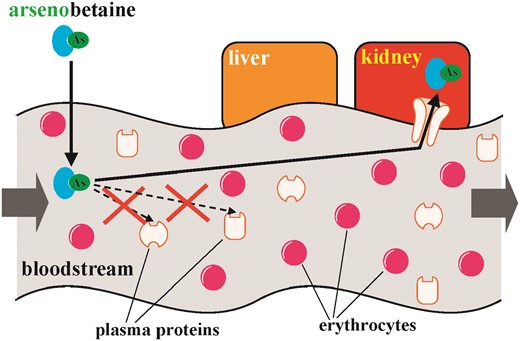-
Views
-
Cite
Cite
Katie L Pei, Jürgen Gailer, Probing the interaction of arsenobetaine with blood plasma constituents in vitro: an SEC-ICP-AES study, Metallomics, Volume 1, Issue 5, September 2009, Pages 403–408, https://doi.org/10.1039/b903681d
Close - Share Icon Share
Abstract
Arsenobetaine, which is frequently ingested by humans via the consumption of seafood, is rapidly excreted unchanged in urine, but not much is known about its transport in the mammalian bloodstream. To assess whether this transport involves binding to plasma proteins, rabbit and human plasma were spiked with arsenobetaine and the mixture was analyzed (after 5 min and again after 6 h) by size-exclusion chromatography (SEC) coupled on-line to an inductively coupled plasma atomic emission spectrometer (ICP-AES). Simultaneous monitoring of the emission lines of As, Cu, Fe and Zn in the column effluent allowed us to determine the elution of arsenobetaine relative to that of the major Cu, Fe and Zn-containing metalloproteins. Over the investigated time period, a single As peak eluted near the inclusion volume on two different SEC columns with fractionation ranges of 600–10 KDa and 7000–100 Da. These results indicate that arsenobetaine did not bind to plasma proteins and that SEC-ICP-AES is a useful tool to rapidly probe toxicologically and pharmacologically-relevant interactions between organometalloid compounds and mammalian blood plasma constituents in vitro.

The addition of arsenobetaine to fresh rabbit and human plasma followed by the analysis of the resulting mixture by SEC-ICP-AES revealed that arsenobetaine does not bind to plasma proteins >300 Da.



